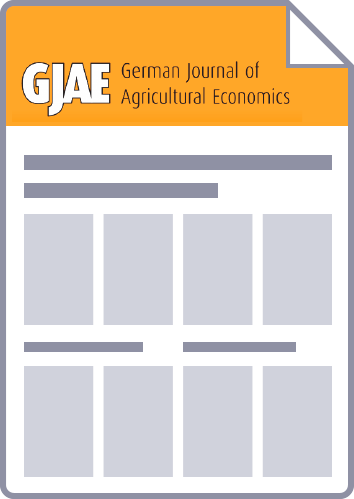In his numerous textbooks WILHELM BRANDES has laid the foundation for theoretically appropriate modeling of farm firms, which has recently been expanded to modeling sustainability goals. The published research results belong to the fields of economic, ecological, and social sustainability. Standard method for the analysis of economic sustainability is the gross margin calculation, for the given purpose extended by associated opportunity costs and/or by appropriately adding further associable branch specific costs. At an on-farm-basis the system has been developed to a management information system under sustainability goals which has been further developed to the new forms of precision agriculture by incorporating yield and soil nutrient mapping, spectroscopic crop condition information as well as use of the global positioning system. At an aggregated, sectoral and regional level the method has been adjusted for the analysis of regional opportunity costs, supply-demand-functions, quota rents etc. Research on product chain sustainability in a world wide comparison are still incipient, whereby the cost effects of environmental standards are increasingly observed. The use of farm records for describing the economic and ecological sustainability of farming systems through updating the list of indicators and by the help of appropriate evaluation routines is asked for by the addressees and needs to be further developed. In transform countries goals of social sustainability are focused at in converting former production cooperatives, collective farms, and state farms. Advanced simultaneous-dynamic planning methods in a highly disaggregative form describe not only social secondary constraints as to liabilities, social compensation plans, etc. but also as to investment and disinvestment and all cash flows by time. They allow to link farm records with the financial plan and controlling and they are as well adequate in view of the increasingly necessary risk analyses, in particular price, policy, and production risk. Ecological sustainability goals concerning for instance soil erosion, nitrate leaching, emission of greenhouse gases and toxic substances, etc. have created methodological variants of farm planning which provide for effect analyses in defining entrepreneurial adaptive paths as well as agro-ecological policy. Modules from natural science were incorporated into models optimizing farming systems holistically. On the aggregated level it was possible to join farm based models to GIS-supported landscape models. Results from such models are presented on the level of small regions and are made readily available on modern data records to addressees in landscape planning and policy. Single farm problems are modeled according to the multi agent approach, which looks at least promising in explaining findings under heavy competition for land, quotas, pollution rights, etc. Essential prerequisite for a continuing innovative development of quantitative farm planning under a sustainability objective was - amongst others - the interdisciplinary approach and the consequent adjustment of research with questions posed by addressees.



